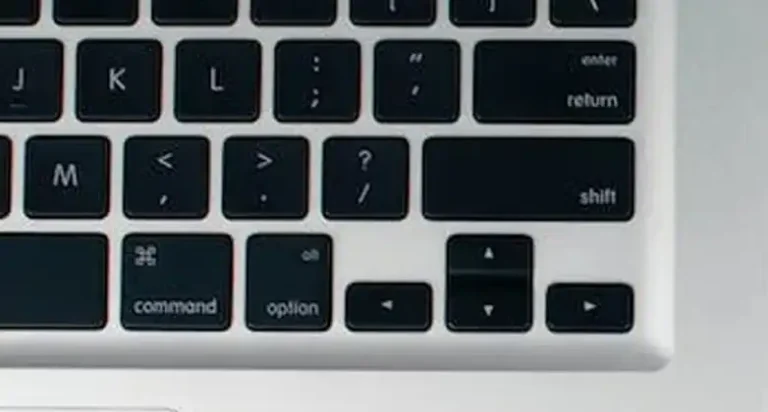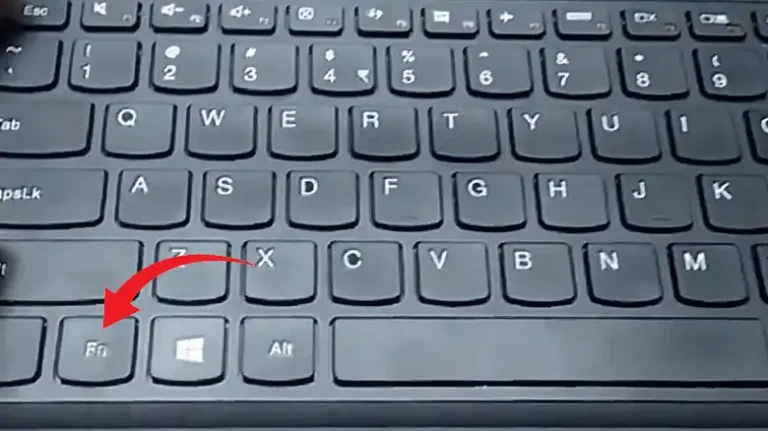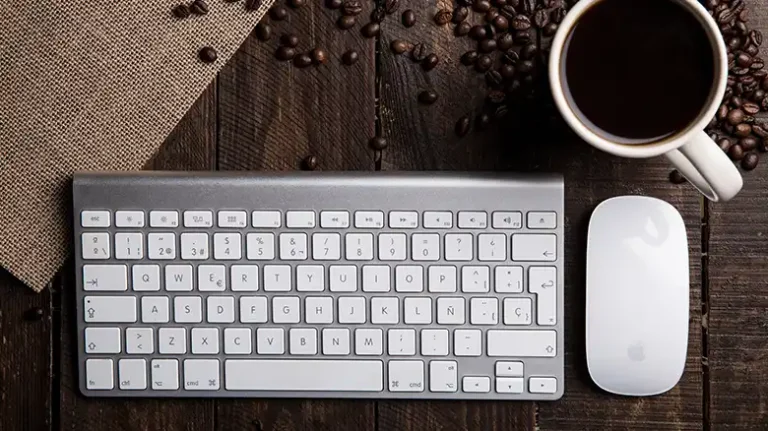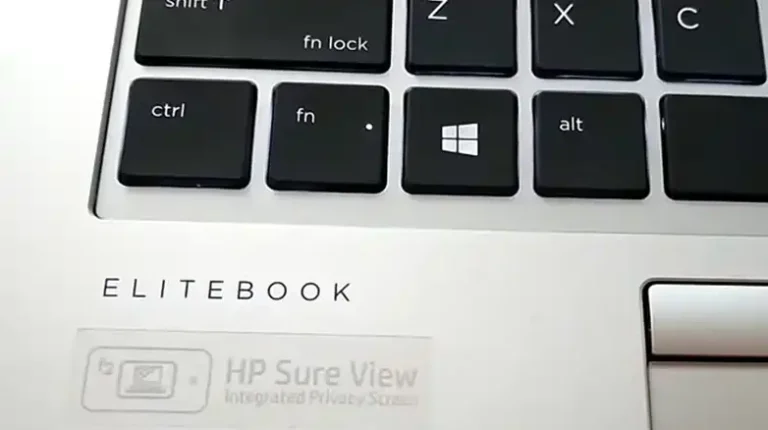Why is My W Key Stuck? Causes and Fixes
A stuck “W” key on your keyboard can be a real nuisance. Typing becomes a chore, and productivity takes a hit. Fortunately, many stuck key issues can be resolved without the need for professional assistance.
This article will explore common reasons behind a sticky “W” key and provide step-by-step solutions to get your keyboard back to its normal, smooth operation.

Common Causes of a Stuck “W” Key
Understanding why your “W” key is stuck is the first step in resolving the issue. Here are some common culprits:
1. Physical Debris or Obstruction
The most frequent cause of a stuck key is the accumulation of dirt, dust, or debris beneath the keycap.
2. Liquid Spillage
Spilling liquids on your keyboard can lead to sticky keys as the liquid seeps beneath the keycaps and creates a residue.
3. Worn Out or Damaged Key Mechanism
Over time, keys can wear out or become damaged, preventing them from moving freely.
4. Software or Driver Issue
In rare cases, a software or driver issue can cause a key to appear stuck.
5. Physical Damage
Accidental drops or heavy pressure can physically damage the keyboard, resulting in stuck keys.
Now, let’s dive into the solutions for each of these scenarios.
How to Fix a Stuck “W” Key
1. Physical Debris or Obstruction
Solution:
- Turn off or Disconnect Your Computer: Ensure your computer is turned off or, if you’re using an external keyboard, disconnect it.
- Remove the Keycap: Carefully remove the keycap using a keycap puller or a flat tool like a credit card. Be gentle to avoid damaging the keycap or the underlying mechanisms.
- Clean the Key and Key Mechanism: Use compressed air and a small brush to clean the area beneath the keycap. Pay attention to removing any dirt, dust, or debris. Also, clean the keycap itself thoroughly.
- Reassemble the Key: Carefully reassemble the keycap onto the mechanism. Press down firmly to ensure it clicks back into place.
- Test the Key: Turn on your computer and test the “W” key to see if it’s functioning properly.
2. Liquid Spillage
Solution:
- Disconnect and Dry: Immediately disconnect the keyboard from your computer if liquid has been spilled. Turn it upside down to let any excess liquid drain out. Leave the keyboard to dry for several hours.
- Clean the Affected Area: Once the keyboard is completely dry, clean the area around the “W” key thoroughly. Use a damp cloth or a cloth lightly moistened with isopropyl alcohol to remove any residue left by the spilled liquid.
- Test the Key: After cleaning, test the “W” key to check if it’s still stuck. It should function normally if the liquid residue has been removed.
3. Worn Out or Damaged Key Mechanism
Solution:
- Evaluate the Key Mechanism: Carefully inspect the “W” key and its surrounding area for signs of physical damage or wear and tear. Look for loose components or visible damage.
- Consider Key Replacement: If the key mechanism appears damaged, you may need to replace the key. Some laptop keys are individually replaceable, while external keyboards may require the replacement of the entire keyboard.
4. Software or Driver Issue
Solution:
- Restart Your Computer: Start by restarting your computer to see if the issue persists. Sometimes, a simple reboot can resolve software-related problems.
- Update or Reinstall Drivers: If the problem continues, update or reinstall the keyboard driver on your computer. Check the manufacturer’s website for the latest driver updates.
- Check for Software Conflicts: Verify if any recently installed software or updates may be causing conflicts with your keyboard. Uninstall any suspicious programs and see if the issue is resolved.
5. Physical Damage
Solution:
- Assess the Damage: If your keyboard has suffered physical damage, such as a drop or heavy impact, there may be little you can do to fix it. Carefully assess the extent of the damage to determine if it’s repairable.
- Consider Replacement: In cases of severe physical damage, you might need to replace the keyboard. Consult the manufacturer or a professional technician for guidance.
How to Keep It From Happening in the Future
Prevention is key when it comes to avoiding stuck keys. Here are some tips to help you keep your keyboard in good condition:
1. Maintain a Clean Workspace
Regularly clean your workspace to minimize the accumulation of dust and debris. This simple practice can go a long way in preventing stuck keys.
2. Use Keyboard Covers
Consider using a keyboard cover to protect your keyboard from spills and debris. These covers are designed to keep liquids and particles out while still allowing for comfortable typing.
3. Be Cautious with Food and Drinks
Avoid eating or drinking over your keyboard to prevent accidental spills. If you do enjoy snacks or beverages at your desk, use spill-resistant containers.
4. Clean Your Keyboard Periodically
Schedule regular keyboard cleaning sessions to remove dirt and dust. Disconnect external keyboards before cleaning.
5. Store Your Keyboard Properly
When not in use, cover your keyboard or store it in a protective case to prevent physical damage.
FAQ: Frequently Asked Questions
Can I use a vacuum cleaner to remove debris from beneath the keycaps?
Using a vacuum cleaner can be effective for removing loose debris, but it’s essential to use a low-suction setting or a specialized keyboard vacuum cleaner attachment to avoid damaging the keyboard components.
Is it safe to clean keycaps with isopropyl alcohol?
Isopropyl alcohol is safe for cleaning keycaps when used in moderation. Dampen a cloth or cotton swab with isopropyl alcohol and gently wipe the keycap surfaces. Ensure the keyboard is disconnected and completely dry before reconnecting it.
How can I prevent software-related keyboard issues in the future?
To prevent software-related issues, regularly update your operating system and keyboard drivers. Be cautious when installing new software, and keep an eye on system updates that may affect your keyboard’s functionality.
Can I fix a physically damaged keyboard at home?
Fixing a physically damaged keyboard at home can be challenging and may not always be possible. In most cases of physical damage, it’s best to consult a professional technician or consider replacing the keyboard.
In Summary
A stuck “W” key can be an annoyance, but with the right approach, you can often resolve the issue yourself. Whether it’s due to debris, liquid spills, wear and tear, software glitches, or physical damage, following the appropriate steps can help you get your keyboard back in working order. Remember to take preventative measures to keep your keyboard in top shape and avoid future issues.

![[Fixed] Command Key Stuck on Mac](https://keyboardhunter.com/wp-content/uploads/2023/10/Command-Key-Stuck-on-Mac-768x431.webp)



![[4 Solutions] Why Is the Letter D on My Keyboard Not Working?](https://keyboardhunter.com/wp-content/uploads/2023/10/Why-Is-the-Letter-D-on-My-Keyboard-Not-Working-768x431.jpg)